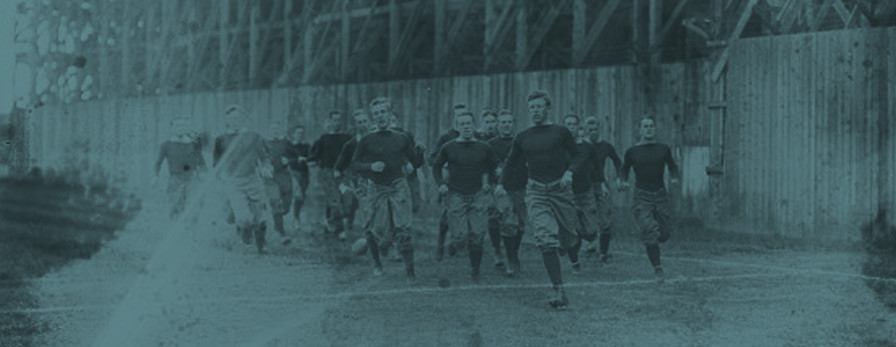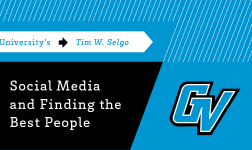The Football Bowl Association has engaged Winthrop Intelligence—helping college athletic administrators increase revenue and make high-stakes decisions—to compile a statistical examination of the 2012-13 Bowl Season, and present a third-party look at the state of post-season football.
Kevin Barefoot, in collaboration with the FBA, sat down recently to discuss the state of the bowls with four longtime bowl executives Eric Poms of the Orange Bowl, Steve Hogan of the Capital One Bowl, Bruce Binkowski of the Holiday Bowl, and Jerry Silverstein of the GoDaddy.com Bowl to discuss the current and future state of the Bowls and their impact on the community.
What are some of your favorite success stories of how your bowl affects the local community?
Chief Executive Officer
This year, our two BCS games; the 79th Discover Orange Bowl and 2013 Discover BCS National Championship Game, truly energized the South Florida community. The tangible benefits were found through economic development and media visibility throughout the country.
Beyond that, our community embraced the magnitude of hosting two prestigious post-season bowl games. Having ACC Champion Florida State back brought a lot of excitement to the Florida State alumni, students and fans that live down here, and MAC Champion Northern Illinois was the first conference representative to ever play in a BCS game. This was coupled with the 2013 Discover BCS National Championship Game between #1 Notre Dame and #2 Alabama; it was the talk of the country. In South Florida, the weather lived up to billing throughout the two weeks and there was a great deal of pride.
In addition, through the BCS, the Orange Bowl is in a position to give back to our community though our traditional programs like the Orange Bowl Youth Football Alliance, our scholarships and legacy gifts. The $3 million refurbishment of Carter Park was a great success story as was Moore Park four years ago.
Steve Hogan – Capital One Bowl
Chief Executive Officer
As in many other cities, we are very proud of the economic impact delivered to our region. We manage two bowl games that deliver between $75-$90 million in annual economic activity for Central Florida.
But we are equally as proud of our continued commitment to children and educational initiatives in our region. As mentioned before we are primarily an economic impact organization, but we have been using the resources associated with these major events to benefit children since the first game in 1947. Just in the past 5 years alone we have invested over $2 million in “at-risk” children in Central Florida through several programs.
Two primary initiatives have been our free summer camps serving over 300 kids over 8 weeks in partnership with the Gang Resistance Education and Training division of the Orlando Police Department, and the “Take Stock in Children” program providing 4-year college scholarships for economically disadvantaged kids in Orange County.
We reach thousands of kids annually through our Foundation MVP’s program, but those are two great examples of work being done. These events can be leveraged exceptionally well for the good of communities around the country while still remaining focused on the core mission of providing tremendous experiences for thousands of student-athletes annually.
 Bruce Binkowski – Holiday Bowl
Bruce Binkowski – Holiday Bowl
Executive Director
The Poinsettia Bowl and the Holiday Bowl are played in the final two weeks of December, the slowest time of the year for local tourism. Every year the two games generate an economic impact that simply would not happen without the games, providing jobs in the tourism industry for hundreds of San Diegans, who otherwise would not be working during that time of the year. Since the inaugural Holiday Bowl in 1978 and the Poinsettia Bowl, which played its first game in 2005, over $600 million of economic impact has been provided the San Diego region by out of town visitors.
Jerry Silverstein – GoDaddy.com Bowl
President
The GoDaddy.com Bowl has proudly hosted an annual Reading and Writing competition amongst fifth grade students. The competition and awards program encourages reading at the fourth and fifth grade level and impacts this age group throughout the region and state of Alabama. This program has been a welcomed addition to the bowl’s scholarship program that distributes scholarships to area students annually as well.
What’s the biggest challenge in putting together a bowl game and how has the FBA helped accomplish your mission?
Chief Executive Officer
The volume of people you’re working with and the infrastructure of the organization tends to be small, yet the magnitude and the window of time is so vast. We do not have the manpower found in a major college athletic department or a professional franchise, so we have to supplement that through volunteerism and that’s a big challenge.
The Football Bowl Association helps us stay focused on what bowl games are all about and on our mission to generate economic development, while at the same time impacting the lives of those that live in our community, especially the youth.
 Steve Hogan – Capital One Bowl
Steve Hogan – Capital One Bowl
Chief Executive Officer
Raising enough money annually to meet the needs of the teams and conferences is always a challenge, but cultivating and managing volunteers effectively to deliver a first-in-class experience for the teams and fans is always a healthy discussion at our annual meetings.
 Bruce Binkowski – Holiday Bowl
Bruce Binkowski – Holiday Bowl
Executive Director
Every year we strive to make the bowl game experience memorable for the student athletes. We need to remember, bowl games are a reward for a successful season for the student athletes, the participating university, and its fans. The challenge is making the bowl experience special every year. By sharing what works and what doesn’t with our bowl partners, through membership in the Football Bowl Association, we are able to provide the best experience possible.
 Jerry Silverstein – GoDaddy.com Bowl
Jerry Silverstein – GoDaddy.com Bowl
President
Sponsor fatigue and reaching sponsors on the corporate level instead of the local level is difficult. The FBA has helped and the new program Fishbait has shown a lot of promise.
What aspect of your work with the bowls are you most proud of?
Chief Executive Officer
Having true value and meaning in your community by putting on a nationally recognized tradition. By virtue of the success of the bowl game, we are able to annually give back in a meaningful way through economic development, though the source of pride, and through community outreach programs. It is gratifying to work hard at something you are passionate about, and the fruit you bare is a source of pride for the community.
Steve Hogan – Capital One Bowl
Chief Executive Officer
Serving on the executive committee gives me a great chance to focus on college football’s post-season on a macro level with some of my peers. Improving communication among the key players, working together on marketing, PR, and developing new revenue streams are all initiatives I have enjoyed being part of as well as hiring the association’s first executive director.
Bruce Binkowski – Holiday Bowl
Executive Director
There are so many things I am proud of over my 36-year association with the Holiday Bowl and Poinsettia Bowl. Just a few and listed in no particular order of importance:
- Our first class hospitality.
- Pre-game and halftime pageantry.
- Annual economic impact.
- National television exposure for the San Diego region.
- History of exciting games.
- A local and national reputation of being a first class event.
- The year around Festival of Events we provide the local community.
 Jerry Silverstein – GoDaddy.com Bowl
Jerry Silverstein – GoDaddy.com Bowl
President
The impact and ways the bowl has been able to participate in and positively affect the local community.
What key facts, often left out of the discussion and media reporting, should the general audience know about bowls?
Chief Executive Officer
Bowl games touch all corners of America. In essence it annually brings approximately 70 campuses to 35 major media markets across the country. So people experience college football in a very unique and creative way. From Boise to San Diego to Orlando to Nashville to New York City … the list goes on and on, in addition to some of these being historic bowl sites. For many universities and conferences, bowl games are the perfect forum to showcase their respective institutions and achieve tremendous visibility. Bowl games bring college football to the national stage.
 Steve Hogan – Capital One Bowl
Steve Hogan – Capital One Bowl
Chief Executive Officer
Bowls are primarily rewards for the student-athletes and we all look at them that way. Over the past century the college football post-season has become a huge, complex enterprise requiring skilled local organizations to meet all the objectives successfully. In the process of accomplishing that mission, each host community benefits from strong visibility and tourism and in turn attempts to steer resources locally toward charitable endeavors, often very successfully.
Many casual fans and members of the media confuse this to mean bowl organizations must be not-for-profits in the traditional sense, like “Coalition for the Homeless” or “the United Way,” when in reality our mission is primarily to drive economic impact. The majority of our fundraising leaves with the participating teams in the form of payouts.
Bruce Binkowski – Holiday Bowl
Executive Director
Thousands of student athletes play college football and only a small percentage play at the professional level. Bowl games for most of the athletes are the most important game they will ever participate in and it is televised nationally. And the bowl week experience provides a lifetime of memories, especially for the senior playing his final game of organized football.
 Jerry Silverstein – GoDaddy.com Bowl
Jerry Silverstein – GoDaddy.com Bowl
President
It is important to note what all the bowl offices do for the community and why the bowl is a year round venture, even though the bowl game is just one day a year.
How will the changes to the BCS rules and structure impact the strategic planning for your bowl in the next 5 years?
Chief Executive Officer
We are looking forward to the new post-season college football structure, which will now feature a four-team playoff within the bowl system. Eight out of 12 years will be a traditional game and four will be National Semifinal Games. We also plan to bid on future national championship games.
We will work proactively to build a viable business model within the new system and at the same time, one that allows us to maintain our ability to give back to the community in a consistent and meaningful way. We have adapted through the years as post-season college football evolved from the Bowl Coalition, to the Bowl Alliance, to the four different terms of the Bowl Championship Series, and we embrace the next phase into this new structure.
Steve Hogan – Capital One Bowl
Chief Executive Officer
I think you will see more of a focus on reducing team expenses creatively, while improving the participating school’s ability to compete with the secondary ticket market. Additionally there should be a focus on flexible team assignments to keep the experience fresh while maintaining strong traditions.
Bruce Binkowski – Holiday Bowl
Executive Director
Change is something that is inevitable in every business. Having been in this business since 1978, this is not the first change there has been in post season college football and it won’t be the last. For us, it is business as usual for both the Poinsettia Bowl and the Holiday Bowl.
 Jerry Silverstein – GoDaddy.com Bowl
Jerry Silverstein – GoDaddy.com Bowl
President
Presently, we do not feel we will be impacted given our conference contracts and selection order.





